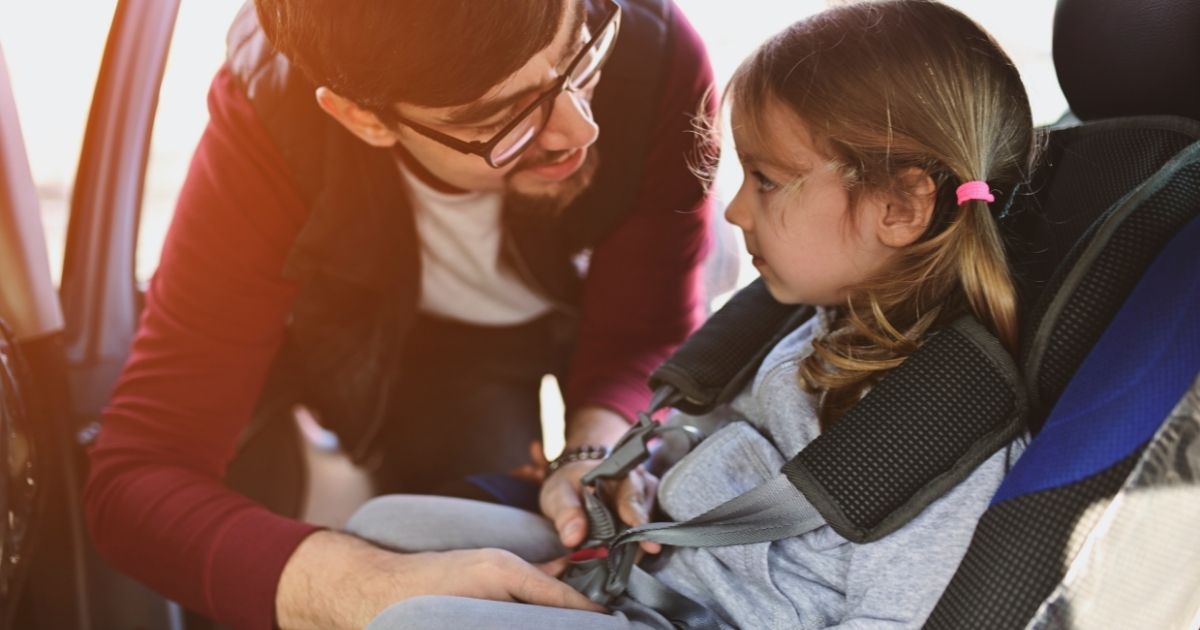How Can I Keep My Children Safe When Riding in the Car?

Car accidents are the leading cause of death in children over the age of four. While today’s motor vehicles are safer than ever thanks to the latest advances in safety technology, and car seats are effective at protecting children in the event of an accident, accidents can and do occur. There are steps you can take to reduce the risk of car accidents, and to ensure that your child is safe and protected. From choosing the right car seat and always wearing a seat belt to obeying the rules of the road and making safety a top priority at all times, establishing safe habits will protect your entire family whenever you are in the car.
How Do I Choose the Right Car Seat?
Car seats have come a long way when it comes to protecting children from serious, even life-threatening injuries if they are in the car when an accident occurs. Choosing the right car seat can be an overwhelming process, but the following tips can help make the right choice based on their child’s age, height and weight:
- Infants and toddlers: Children should be secured in a rear-facing car seat in the back seat until they are at least two years old, or until they outgrow the height and weight limits. It is recommended that children remain in a rear-facing seat for as long as possible, because the child’s fragile neck and spinal cord are supported and protected by the car seat. Examples of rear-facing car seats include infant seats, which are only rear-facing and are designed for newborns and small babies, and convertible seats, which are full-sized car seats that can be used in the rear-facing and front-facing position, some of which may fit a newborn.
- Toddlers and preschoolers: Children should use forward-facing car seats from the time they outgrow the rear-facing seat until they weigh at least 65 pounds, their shoulders are above the seat’s top harness slots and the child’s ears reach the top of the car seat. This usually occurs when the child reaches the age of five or six. These car seats generally have a 5-point harness, which contacts more points of the body and distributes the force of the impact. Examples of front-facing car seats include convertible seats, all-in-one seats and combination seats with a harness, which go from a forward-facing seat to a belt positioning booster.
- School-aged children: Children who have outgrown the forward-facing car seat should be secured in a booster seat, which uses the adult lap and shoulder belt in the back seat. The booster seat lifts the child up so that the adult seat belt will contact the strongest point of the child’s body and provide the best protection. Generally, children should use a booster seat until they are at least 4 feet 9 inches tall.
- Older children: When a child has outgrown the booster seat, they should wear the lap and shoulder belt every time they ride in the car. In addition, all children under the age of 13 should ride in the back seat at all times. If the airbag deploys, and a young child is riding in the front seat, it can cause serious, even fatal injuries.
What Hot Weather Safety Tips Should I Keep in Mind?
Summer is approaching, which means that the temperatures are slowly but surely starting to climb. On hot days, the temperature inside the car can climb almost 20 degrees in only ten minutes. Cracking the window open a few inches does not prevent the temperature from continuing to climb. Unfortunately, every ten days, a child dies from heatstroke after being in a hot vehicle. In more than half of these tragic fatalities, the caretaker forgot that the child was in the car. Parents can prevent these devastating deaths by keeping the following tips in mind:
- Never leave a child alone in the car. Even if you are making a quick stop or just dropping something off, do not leave a small child in the car, as the car can get very hot very quickly.
- Create reminders. Oftentimes, these tragic accidents occur because the parent or caregiver forgot that the child was in the back seat. You can prevent this from happening by keeping a stuffed animal or some other memento in the front seat as a reminder that your child is in the car. You could also keep your purse, phone, or left shoe in the back seat when you are driving with your child. That way, you will have to reach for it when you get out of the car, which will remind you that your child is in the back seat.
- Take immediate action. If you happen to notice a child in the back seat of a car, and there is no adult in the vehicle, call 911 immediately so that police or emergency personnel can respond quickly and remove the child from the vehicle.
What Else Can I Do to Keep My Child Safe in and Around Cars?
In addition to choosing the appropriate car seat and making sure that your child is not left in a hot car, the following tips will help keep your children safe while they are in the car, or in the vicinity of other cars:
- Avoid letting your child eat certain foods in the car. Having snacks on hand is always a good idea, particularly when the children start to get hungry and cranky. However, certain foods can be a choking hazard, which can turn deadly if the child is in a rear-facing car seat and you do not notice that he or she is choking. Most safety organizations urge parents to avoid giving children any food while they are in the car. However, if snacks are a must-have, applesauce pouches or yogurt tubes would be a safer option.
- Always hold hands in the parking lot. Young children do not always understand the dangers of parking lots, including motorists who back out of their spot without looking or people who drive too fast through parking lots. Parents should hold their children’s hands, even if they have a toddler who is going through an independent phase who wants to do everything without any help. Teach them that holding hands in parking lots is non-negotiable.
- Secure any loose articles. If there are any sharp objects in the vehicle, put them in the glove compartment or in the trunk. In the event of an accident, these can become a dangerous projectile and cause serious injuries. Even unrestrained pets can be projected with extreme force if you or another vehicle were traveling at a high speed at the time of the accident.
- Do not let children play near parked cars. This may seem harmless, but if the car owner gets in and starts to back up, he or she may not see the children if they are in his or her blind spot. This can have tragic consequences.
- Put your phone away. Distracted driving is one of the top causes of car accidents, and talking and texting on the phone is one of the main culprits.
- Teach children to look both ways before crossing the street. Too often, small children will run into the street if they are chasing a ball, or running home from another house. If they do not look both ways before crossing, and a car is driving by, they could get hit by a car and suffer very serious injuries. Even if the car is traveling at a relatively low speed, the injuries could be fatal.
- Keep the windows on child lock when the children are in the car. According to KidsandCars.org, it only takes 22 pounds of force to suffocate or seriously injure an infant. Power winders can exert anywhere between 30 and 80 pounds of force. Despite the fact that newer car models are equipped with power winders that have improved safety features, it is highly recommended that parents and caregivers keep the child lock feature in use when the children are in the car, whether the vehicle is moving or parked.
Savannah Car Accident Lawyers at Kicklighter Law Help Victims of Car Accidents
If your child was injured in a car accident, you are urged to contact our Savannah car accident lawyers at Kicklighter Law. To schedule a confidential consultation, call us today at 912-754-6003 or contact us online. With our office located in Springfield, Georgia, we serve Springfield, Effingham County, Savannah, and the surrounding areas.
